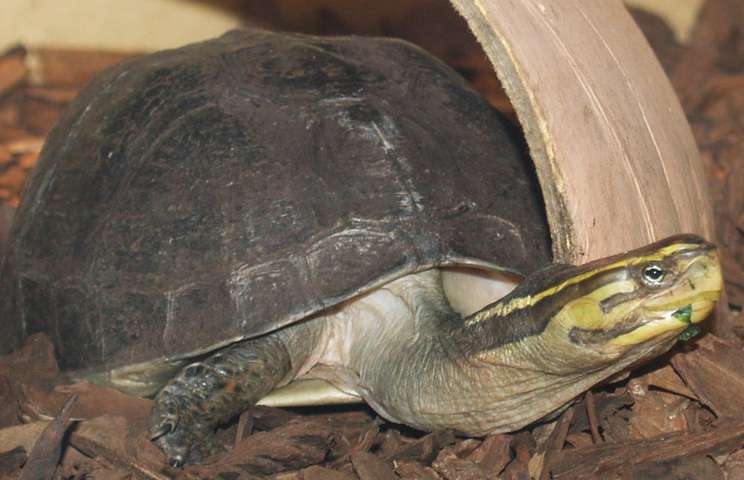
The alligator snapping turtle, which can weigh up to 220 lbs. and is covered in long, black rows of pyramid-shaped spikes, is perhaps the closest thing one can get to owning a pet dinosaur.
Habitat
Small snappers can be temporarily kept in an aquarium or a breeder tank. Remember that such storage is only a temporary fix, and it should only be taken into account when your snapper is still young (less than 1 foot in length). An inch or two should be added to your turtle’s size per year. Additionally, some turtle keepers of snapper employ plastic or galvanized steel stock tanks, which are used for storing water for animals. A pond liner must be used to line steel tanks in order to stop potentially hazardous metals from seeping into the water. Contrarily, plastic tanks don’t need to be lined.
Care as a Pet

Enclosure
Make a barrier around your turtle to stop it from escaping and intruders from entering. Each post should be dug at least a foot into the earth, and the fence should be at least two to three times taller than the length of your turtle’s carapace. For younger snappers, you may also install an overhead net or chicken wire to ward off raptors.
Heat
Although they have been observed as far north as southeastern Iowa and western Illinois, alligator snappers are endemic to the southeastern region of the United States. Alligator snappers have been discovered in the wild immersed in water that was between 70 and 74 °F.
Snapper turtles kept in captivity have been known to refuse food when the outside temperature drops below 65 °F. To prevent hibernation throughout the first few years of your snapper’s life, breeders advise maintaining a constant temperature of 82 °F. (See hibernation farther down.
Feed
The diet of snapper is primarily carnivorous. They feed largely fish and dead animals in the wild, luring them with their tongues, which are fashioned like worms. Along with plants and animals, snappers also consume salamanders, alligators, turtles, mammals, snails, wild grapes, roots, palmetto fruits, and persimmons. Obviously, variety is important.
Table





